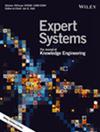Underwater image enhancement using contrast correction
IF 3
4区 计算机科学
Q2 COMPUTER SCIENCE, ARTIFICIAL INTELLIGENCE
引用次数: 0
Abstract
Light‐induced degeneration of underwater images occurs by physical features of seawater. According to the wavelength of the colour spectrum, light reduces intensity significantly when it moves through water. The greatest wavelength of light that is visible gets absorbed first. Red and blue absorb the most and least, respectively. Because of the reducing consequences of the light spectrum, underwater images having poor contrast can be obtained. As a result, the crucial data contained inside these images will not be effectively retrieved for later analysis. The recent research suggests a novel approach to enhance the contrast while decreasing noise in underwater images. The recommended approach involves image histogram transformation using two significant colour spaces, Red‐Green‐Blue (RGB) and Hue‐Saturation‐Value (HSV). The histogram of the dominant colour channel (blue channel) in the RGB colour model is extended towards the lower level, containing a maximum limitation of 95%, while the inferior red colour channel has been extended towards the upper side, containing a minimum limitation of 5%. During the entire dynamic range, the green colour channel having the dominant and inferior colour channels expands in each direction. The Rayleigh distribution has been utilized for developing various stretching actions within the RGB colour space. The image has been converted to the HSV colour space, having the S and V elements adjusted within 1% of their minimum and maximum values. The suggested approach is examined in both qualitative and quantitative analysis. According to qualitative analysis, the recommended approach substantially boosts image contrast, lowers its blue and green effect, and minimizes over‐enhanced and under‐enhanced sections in the final resultant underwater image. The quantitative examination of 500 large scale underwater images dataset reveals that the suggested technique generates better results. The dataset images are grouped into small fish images, blue coral images, stone wall images, and coral branch images. The quantitative examination of all these four groups have been evaluated and shown. The average mean square error, peak signal to noise ratio, underwater image quality measurement, and underwater colour image quality evaluation values of dataset images are 76.69, 31.25, 3.85, and 0.64, respectively. These values of our proposed work outperform six other previous methods.利用对比度校正增强水下图像
海水的物理特性会导致光引起的水下图像质量下降。根据彩色光谱的波长,光在水中移动时会大大降低强度。波长最大的可见光首先被吸收。红色和蓝色分别吸收最多和最少。由于光谱减弱的影响,水下图像的对比度很低。因此,这些图像中包含的重要数据将无法被有效地检索出来,以供日后分析。最近的研究提出了一种新方法来增强水下图像的对比度,同时降低噪声。建议采用的方法包括利用红-绿-蓝(RGB)和色相-饱和度-值(HSV)这两个重要的色彩空间进行图像直方图转换。在 RGB 色彩模型中,主要色彩通道(蓝色通道)的直方图向低层扩展,最大限制为 95%,而次要的红色通道则向高层扩展,最小限制为 5%。在整个动态范围内,具有优势和劣势色彩通道的绿色通道向各个方向扩展。利用瑞利分布在 RGB 色彩空间内进行各种拉伸操作。图像被转换到 HSV 色彩空间,S 和 V 元素的调整幅度为其最小值和最大值的 1%。对建议的方法进行了定性和定量分析。根据定性分析,建议的方法大大提高了图像对比度,降低了蓝绿效果,并最大限度地减少了最终水下图像中过度增强和增强不足的部分。对 500 幅大型水下图像数据集的定量分析显示,建议的技术能产生更好的效果。数据集图像分为小鱼图像、蓝珊瑚图像、石墙图像和珊瑚枝图像。对所有这四组图像进行了定量检测和评估。数据集图像的平均均方误差、峰值信噪比、水下图像质量测量和水下彩色图像质量评估值分别为 76.69、31.25、3.85 和 0.64。我们提出的方法的这些值优于之前的其他六种方法。
本文章由计算机程序翻译,如有差异,请以英文原文为准。
求助全文
约1分钟内获得全文
求助全文
来源期刊

Expert Systems
工程技术-计算机:理论方法
CiteScore
7.40
自引率
6.10%
发文量
266
审稿时长
24 months
期刊介绍:
Expert Systems: The Journal of Knowledge Engineering publishes papers dealing with all aspects of knowledge engineering, including individual methods and techniques in knowledge acquisition and representation, and their application in the construction of systems – including expert systems – based thereon. Detailed scientific evaluation is an essential part of any paper.
As well as traditional application areas, such as Software and Requirements Engineering, Human-Computer Interaction, and Artificial Intelligence, we are aiming at the new and growing markets for these technologies, such as Business, Economy, Market Research, and Medical and Health Care. The shift towards this new focus will be marked by a series of special issues covering hot and emergent topics.
 求助内容:
求助内容: 应助结果提醒方式:
应助结果提醒方式:


